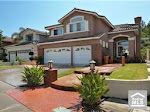Flipping Foreclosed Homes

Hoping there are big profits to be made in the aftermath of California's housing collapse, professional investors are flocking to the business of buying foreclosed homes at distressed prices.
The investors, primarily private equity funds and groups of wealthy individuals, purchase the homes at public auctions, which are held daily on the steps of local courthouses. They refurbish the properties and try to sell them for quick profits.
Not long ago, the typical home flipper was an amateur tapping a home equity line or savings for an investment property. But professionals have rushed in, partly because of sparse investment opportunities elsewhere.
"In crisis there's opportunity," said Rick Hudson, president of investment firm Prosperity Group Real Estate in Irvine. "Right now there's huge opportunity with flipping houses."
Closely watched gauges of professional buying have surged over the last two years.
The number of homes sold at foreclosure auctions statewide increased to 4,336 in April, from 884 in January 2009, according to research firm ForeclosureRadar. It eased back to 3,483 in July as banks offered fewer properties for sale. The auctions are dominated by professional investors who shop with cash (although not usually with actual greenbacks, for practical reasons).
Another measure, the percentage of all homes sold to absentee buyers, paints a similar picture. In the hard-hit Inland Empire, for instance, 30% of all homes sold in April went to absentee buyers -- up from 19% at the end of 2008 and the highest level in at least seven years, according to San Diego research firm MDA DataQuick. It was at 28.2% in July.
The binge of professional buying has helped spark a nascent housing recovery in Southern California because investors have cut significantly into the glut of foreclosed properties after the subprime mortgage meltdown.
Home sales in the six-county region rose 7.2% in June from May and 2.6% from a year earlier, according to MDA DataQuick. In July, overall sales tumbled primarily because of the expiration of federal tax credits, falling 20.6% from the month before in Los Angeles, Orange, Riverside, San Bernardino, San Diego and Ventura counties. But the region's median home price of $295,000 was off only 1.7% from June.
The fragile rebound in the broader market contrasts with the behind-the-scenes scramble at foreclosure auctions.
"There's a tremendous amount of capital that is desperate to just buy anything right now," said Gil Priel, principal of a real estate investment firm in Woodland Hills.
In some cases, well-financed newcomers are elbowing out smaller investors at auction sales.
"The people who want to go and buy a house to flip, and do one or two, are already exiting the market," said Jan Brzeski, who manages a residential investment fund at Standard Capital in Los Angeles.
The swarm of new investors, however, is making a treacherous and labor-intensive business even tougher.
Investors must do their homework on dozens of homes for every one they buy. Legal and other impediments usually prevent them from going into homes prior to buying them, leaving no way to gauge repair costs. And despite being foreclosed on, the original owners often still live in the houses. That forces buyers to pay them to leave, a dynamic known as cash-for-keys.
The influx of new players is pushing up auction prices and squeezing profits. The average discount at auctions -- the difference between a home's sale price and its actual value -- is 21.6%, down from 28% in January 2009, according to ForeclosureRadar.
Last year, Chase Merritt, a Newport Beach private equity fund management firm, notched strong returns from auction sales, said Chad Horning, its chief executive. Chase Merritt bought a property in Costa Mesa in June 2009 for $315,500 and sold it 21/2 months later for $470,000. It bought a Mission Viejo home for $305,371 and sold it within two months for $375,000.
Chase Merritt launched its first foreclosure fund in May 2009 and has started two more funds since then. But "it's literally gone from a business that's very attractive, even lucrative, 12 to 18 months ago to something that almost doesn't make sense," Horning said.
"It's just like the housing bubble," he said. "It's almost like we're in a bubble at the courthouse steps."
The scramble was on display recently at an auction at the Norwalk courthouse.
A semicircle of people crowded around auctioneer Elwood Brown. Most were clad in cargo shorts and flip-flops. A few sat in lawn chairs. But their laptops and cellphones, as well as the thousands of dollars' worth of cashier's checks they clutched, marked them as professional investors girding for battle.
Brown took a swig from his oversized water bottle and announced that bidding for a four-bedroom duplex in Hawthorne would start at $179,598.60.
The price shot up within seconds as two men and a woman raised one another's bids in $1,000 increments.
"It's at 229, Daryl," a man in a polo shirt and sunglasses whispered intently into his cellphone. "About to close. Do you want it?"
He increased his offer, but a rival bidder claimed the home a few seconds later for $237,000.
Competition at the auctions is brutal, said Bruce Norris of Norris Group, a real estate investment firm in Riverside.
Norris unwittingly bought a house that was the site of a gruesome double murder. No one else bid -- a rare occurrence that showed others knew the history -- leaving Norris with less cash to bid for other houses.
"It's a very lonely place out there," Norris said.
That's only one of many risks in the foreclosure business. People who've lost their homes through foreclosure sometimes vent their anger by smashing walls, knocking over water heaters or ripping out toilets.
"We've literally had people take $20,000 of cabinetry out and feel perfectly justified doing it," Norris said.
The daily auction ritual begins each morning when banks signal which homes they are likely to dispose of that day. That sets off an early-hours scramble as would-be buyers speed through suburban neighborhoods to investigate the homes.
On a recent day, Norris steered his sport utility vehicle into the driveway of a 3,300-square-foot McMansion on a corner lot in Moreno Valley. The front lawn was brown and the backyard was littered with garbage. But the windows were intact and there was no visible damage -- far better than many foreclosures.
Aiming for an all-important look inside, Norris rang the doorbell and delivered the bad news to the teenage boy who answered the door that the home was scheduled to be sold that day.
"Do you mind if I poke around a little bit to see what kind of condition it's in?" Norris asked, angling his body to get a glimpse of the living room.
Then another car sped up and a rival buyer hurried up the driveway. She studied the house for a few seconds and craned her neck over the wooden fence protecting the backyard.
"This is a dream compared to a lot of them," she said in a satisfied tone as she rushed back to her car.
In the end, no one bought the home. The sale was delayed after the owner filed for bankruptcy protection.
Norris was philosophical, knowing that there were plenty more foreclosures.
"If you miss one," he said, "oh well, tomorrow's another pile."
Information provided by The Los Angeles Times








































































































